


RobertSchneiker.com



GSA 2014
WEATHERING AND THE AGE OF THE SPHINX
Abstract
The
4,500
year
old
Great
Sphinx
in
Egypt
exhibits
a
degree
of
weathering
not
seen
elsewhere
on
the
Giza
Plateau.
Schoch
and
West
1
suggested
that
weathering
is
principally
the
product
of
precipitation.
Yet
annual
precipitation
has
been
estimated
to
be
about
2.5
cm
over
the
past
5,000
years,
far
too
low
to
explain
the
degree
of
weathering.
Based
on
higher
rates
of
precipitation
prior
to
5,000
years
ago
Schoch
and
West
concluded
that
the
Sphinx
was
constructed
by
an
unknown civilization perhaps as long as 11,000 years ago.
The
assumption
that
weathering
is
principally
the
result
of
precipitation
may
not
be
correct.
Additional
sources
of
weathering
have
been
identified
including:
dew,
groundwater,
and
even
the
Nile
River.
Unlike
the
pyramids
the
Sphinx
is
a
statue
that
was
excavated
out
of
the
limestone
bedrock.
The
13
meter
excavation
significantly
decreased
the
depth
to
the
water
table
putting
the
Sphinx
within
the
upper
limits
of
the
annual
Nile
flood
waters.
Even
if
the
floods
did
not
reach
the
excavation
they
still
would
have
replenished
groundwater.
In
addition
the
Sphinx
spent
most
of
the
past
4,500
years buried up to its neck in sand.
SESOIL
vadose
zone
computer
modeling
was
performed
to
evaluate
groundwater
recharge
for
various
scenarios.
Model
results
indicate
that
in
carving
the
Sphinx
the
floor
of
the
excavation
encountered
the
capillary
rise
zone.
This
turned
on
weathering
as
shallow
groundwater
wicked
up
and
evaporated
at
the
surface.
The
wicking
process
was
turned
off
whenever
the
excavation
filled
with
sand.
Only
to
be
turned
on
again
once
the
sand
was
removed.
Rather
than
the
sole
product
of
precipitation
weathering
appears
to
be
the
result
of
a
sporadic
interaction
of
various
processes;
thus
it
cannot to be used to estimate the age of the Sphinx.
Today the sand is gone, so weathering is turned on. Dewatering is being used to lower the water table and turn off the
weathering process. Modeling was used to determine how far dewatering needs to lower the water table to turn off weathering.
1.
R. M. Schoch and J. A. West, 1991, Redating the Great Sphinx of Giza, Egypt. Geological Society of America Annual Meeting, San Diego, October 1991, v. 23, no. 5, p. A253
RESOLVING THE RIDDLE OF THE SPHINX
Egyptologists place construction of the Sphinx around the time of the pyramids, about 4,500 years ago. But based on the
degree and type of weathering Dr. Robert M. Schoch
1
, a geophysicist claims the Sphinx was exposed to prolonged periods of
higher precipitation. There is no doubt that such conditions existed until the end of the last ice age about 9,000 to 12,000
years ago. At first this assumption appears plausible as even in desert environments weathering is typically dominated by
precipitation. The riddle is humans were not capable of constructing anything so complex at that time. Such an early date
would require construction by a lost civilization or perhaps even ancient astronauts. Some have even claimed the weathering
is proof of Noah’s Flood. The Internet is full of wild speculation but the true cause of ancient weathering remains elusive.
CONSTRUCTION
Unlike the pyramids the Sphinx is a statue carved from limestone bedrock. The excavation significantly de- creased the
depth to the water table putting the Sphinx within the upper limits of the annual Nile flood waters. REPAIRS Due to
extensive bottom up weathering repairs have been documented on at least three occasions between 1,400 BC and
today. If weathering was due to precipitation, simply diverting runoff could have resolved the problem.
REPAIRS
Due to extensive bottom up weathering repairs have been documented on at least three occasions between 1,400 BC
and today. If weathering was due to precipitation, simply diverting runoff could have resolved the problem.
PROPOSED SPHINX WEATHERING PROCESSES
PRECIPITATION: About 2.7 cm annually for the last 5,000 years. Much higher prior to 3,500 BC.
AEOLIAN: Removal of limestone bedrock via “sandblasting” by windborne particles.
DEW: Nightly dew dissolves salt that is redeposited in the morning causing exfoliation. How is the salt replenished?
GROUNDWATER: Upward wicking of shallow salty groundwater that evaporates at the surface depositing salt causing
the rock to exfoliate.
NILE FLOODING: Annual flood water is funneled via the Nile River past Giza.
ANCIENT NILE FLOODING: 8,000 to 3,500 BC higher rates of precipitation produce extremely high floods. Likely would
have inundated the Sphinx excavation if it existed.
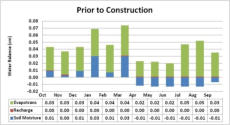
THE NILOMETER
The Nilometer used to measure the level of the Nile River
from 622 to 1921 AD. Nilometer floods average 17.6 m AMSL
(21.4 m max). Located side gradient to the Sphinx. Levels
above 20 m would flood the Sphinx excavation.
WEATHERING TODAY
Today the Sphinx is under attack by shallow salty groundwater
that wicks up and evaporates at the surface. As is does salt
precipitates in the pore spaces causing the rock to exfoliate.
This is a common problem in the Cairo area. Dewatering is being used to
lower the water table and reduce this threat. Modeling was performed to
evaluate the influence of dewatering.
SESOIL RESULTS
SESOIL vadose zone modeling was performed to evaluate groundwater
recharge for various scenarios. Results indicate that in carving the Sphinx
the floor of the excavation encountered the capillary rise zone. This
turned on weathering as shallow groundwater wicked up and evaporated
at the surface. The wicking process was turned off whenever the
excavation filled with sand. Only to be turned on again once the sand was
removed. Even with only 2.7 cm of annual precipitation recharge though
the sand could create a perched water table. This would depend on the
properties of the limestone beneath and may have changed over time.
Simulated dewatering groundwater depths of 0 to 10 m beneath Sphinx.
Proto-Sphinx likely a topographic high
with elevations between 33 to 40 m
AMSL. Surrounded by quarries used to
build the pyramids. Water table at 17 m.
Predicted annual recharge +0.01 cm.
Base of the Sphinx excavation now at
2
0
m AMSL. Nilometer floods average
1
7
.6
m AMSL between 622 and 1921.
Water table set to 17 m AMSL.
Predicted annual recharge -78.78 cm.
The Sphinx spends most of the last
4,500 years partially buried sand.
Surface elevation at 30 m with
groundwater at 17 m AMSL.
Predicted annual recharge +0.66 cm.
CONCLUSIONS
Weathering appears to be the combination of wicking
groundwater and Nile floods, not precipitation.
Explains the bottom-up weathering without resorting to
recarving the head.
Not seen on other monuments as they are high and dry.
Excess precipitation that supposedly weathered an
older Sphinx would likely flood the excavation.
Today the sand is gone, so weathering is turned on.





Weathering is the result of a sporadic interaction of
various processes; thus weathering cannot to be used
to estimate the age of the Sphinx.
Precipitation recharging through the sand may have
soaked the Sphinx in a perched water table.
Dewatering should reduce and eventually halt
groundwater wicking.



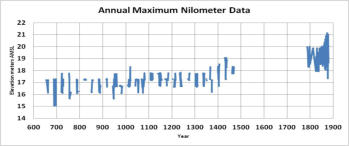
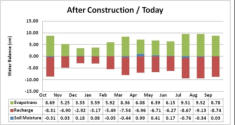
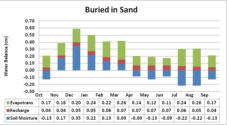
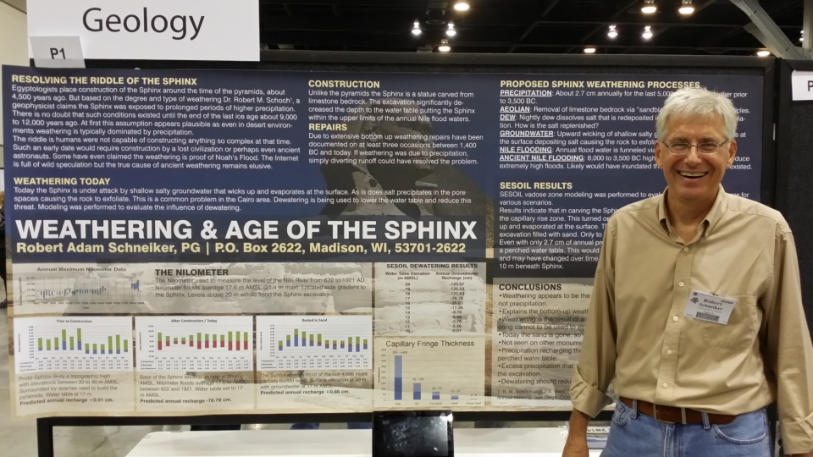
Mysteries of the
Great Sphinx







© Robert Adam Schneiker 2023
RobertSchneiker.com


GSA 2014
WEATHERING AND THE AGE OF THE SPHINX
Abstract
The
4,500
year
old
Great
Sphinx
in
Egypt
exhibits
a
degree
of
weathering
not
seen
elsewhere
on
the
Giza
Plateau.
Schoch
and
West
1
suggested
that
weathering
is
principally
the
product
of
precipitation.
Yet
annual
precipitation
has
been
estimated
to
be
about
2.5
cm
over
the
past
5,000
years,
far
too
low
to
explain
the
degree
of
weathering.
Based
on
higher
rates
of
precipitation
prior
to
5,000
years
ago
Schoch
and
West
concluded
that
the
Sphinx
was
constructed
by
an
unknown
civilization
perhaps
as
long as 11,000 years ago.
The
assumption
that
weathering
is
principally
the
result
of
precipitation
may
not
be
correct.
Additional
sources
of
weathering
have
been
identified
including:
dew,
groundwater,
and
even
the
Nile
River.
Unlike
the
pyramids
the
Sphinx
is
a
statue
that
was
excavated
out
of
the
limestone
bedrock.
The
13
meter
excavation
significantly
decreased
the
depth
to
the
water
table
putting
the
Sphinx
within
the
upper
limits
of
the
annual
Nile
flood
waters.
Even
if
the
floods
did
not
reach
the
excavation
they
still
would
have
replenished
groundwater.
In
addition
the
Sphinx
spent
most
of the past 4,500 years buried up to its neck in sand.
SESOIL
vadose
zone
computer
modeling
was
performed
to
evaluate
groundwater
recharge
for
various
scenarios.
Model
results
indicate
that
in
carving
the
Sphinx
the
floor
of
the
excavation
encountered
the
capillary
rise
zone.
This
turned
on
weathering
as
shallow
groundwater
wicked
up
and
evaporated
at
the
surface.
The
wicking
process
was
turned
off
whenever
the
excavation
filled
with
sand.
Only
to
be
turned
on
again
once
the
sand
was
removed.
Rather
than
the
sole
product
of
precipitation
weathering
appears
to
be
the
result
of
a
sporadic
interaction
of
various
processes; thus it
cannot to be used to estimate the age of the Sphinx.
Today the sand is gone, so weathering is turned on. Dewatering is being
used to lower the water table and turn off the weathering process.
Modeling was used to determine how far dewatering needs to lower the water
table to turn off weathering.
1.
R. M. Schoch and J. A. West, 1991, Redating the Great Sphinx of Giza, Egypt. Geological Society of America
Annual Meeting, San Diego, October 1991, v. 23, no. 5, p. A253
RESOLVING THE RIDDLE OF THE SPHINX
Egyptologists place construction of the Sphinx around the time of the
pyramids, about 4,500 years ago. But based on the degree and type of
weathering Dr. Robert M. Schoch
1
, a geophysicist claims the Sphinx was
exposed to prolonged periods of higher precipitation. There is no doubt that
such conditions existed until the end of the last ice age about 9,000 to 12,000
years ago. At first this assumption appears plausible as even in desert
environments weathering is typically dominated by precipitation. The riddle
is humans were not capable of constructing anything so complex at that time.
Such an early date would require construction by a lost civilization or perhaps
even ancient astronauts. Some have even claimed the weathering is proof of
Noah’s Flood. The Internet is full of wild speculation but the true cause of
ancient weathering remains elusive.
CONSTRUCTION
Unlike the pyramids the Sphinx is a statue carved from limestone bedrock.
The excavation significantly de- creased the depth to the water table
putting the Sphinx within the upper limits of the annual Nile flood waters.
REPAIRS Due to extensive bottom up weathering repairs have been
documented on at least three occasions between 1,400 BC and today. If
weathering was due to precipitation, simply diverting runoff could have
resolved the problem.
REPAIRS
Due to extensive bottom up weathering repairs have been documented
on at least three occasions between 1,400 BC and today. If weathering
was due to precipitation, simply diverting runoff could have resolved the
problem.
PROPOSED SPHINX WEATHERING PROCESSES
PRECIPITATION: About 2.7 cm annually for the last 5,000 years. Much
higher prior to 3,500 BC.
AEOLIAN: Removal of limestone bedrock via “sandblasting” by windborne
particles.
DEW: Nightly dew dissolves salt that is redeposited in the morning causing
exfoliation. How is the salt replenished?
GROUNDWATER: Upward wicking of shallow salty groundwater that
evaporates at the surface depositing salt causing the rock to
exfoliate.
NILE FLOODING: Annual flood water is funneled via the Nile River past
Giza.
ANCIENT NILE FLOODING: 8,000 to 3,500 BC higher rates of precipitation
produce extremely high floods. Likely would have inundated the
Sphinx excavation if it existed.
THE NILOMETER
The Nilometer used to measure the level of the Nile River from 622 to
1921 AD. Nilometer floods average 17.6 m AMSL (21.4 m max). Located
side gradient to the Sphinx. Levels above 20 m would flood the Sphinx
excavation.
WEATHERING TODAY
Today the Sphinx is under attack by shallow salty groundwater that wicks up
and evaporates at the surface. As is does salt precipitates in the pore spaces
causing the rock to exfoliate. This is a common problem in the Cairo area.
Dewatering is being used to lower the water table and reduce this threat.
Modeling was performed to evaluate the influence of dewatering.
SESOIL RESULTS
SESOIL vadose zone modeling was performed to evaluate groundwater
recharge for various scenarios. Results indicate that in carving the Sphinx
the floor of the excavation encountered the capillary rise zone. This turned
on weathering as shallow groundwater wicked up and evaporated at the
surface. The wicking process was turned off whenever the excavation filled
with sand. Only to be turned on again once the sand was removed. Even
with only 2.7 cm of annual precipitation recharge though the sand could
create a perched water table. This would depend on the properties of the
limestone beneath and may have changed over time. Simulated dewatering
groundwater depths of 0 to 10 m beneath Sphinx.
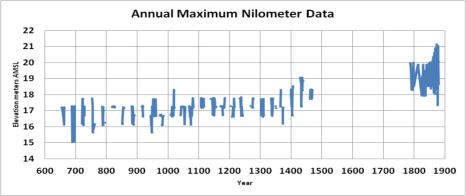
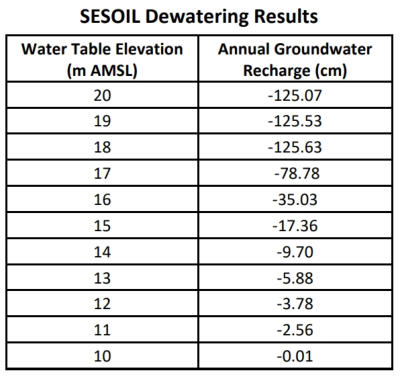
Proto-Sphinx likely a topographic high with elevations between 33 to 40 m
AMSL. Surrounded by quarries used to build the pyramids. Water table at 17
m. Predicted annual recharge +0.01 cm.
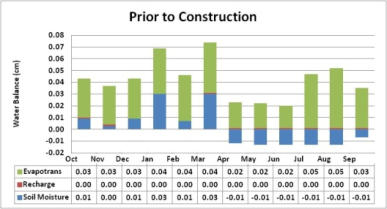
Base of the Sphinx excavation now at 20 m AMSL. Nilometer floods average
17.6 m AMSL between 622 and 1921. Water table set to 17 m AMSL.
Predicted annual recharge -78.78 cm.
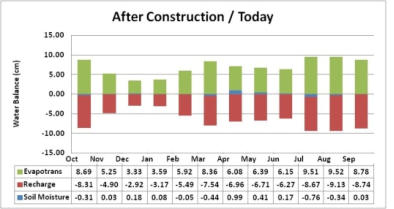
The Sphinx spends most of the last 4,500 years partially buried sand. Surface
elevation at 30 m with groundwater at 17 m AMSL. Predicted annual
recharge +0.66 cm
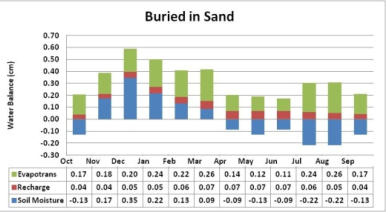
CONCLUSIONS
•
Weathering appears to be the combination of wicking groundwater and
Nile floods, not precipitation.
•
Explains the bottom-up weathering without resorting to recarving the
head.
•
Not seen on other monuments as they are high and dry.
•
Excess precipitation that supposedly weathered an older Sphinx would
likely flood the excavation.
•
Today the sand is gone, so weathering is turned on.
•
Weathering is the result of a sporadic interaction of various processes;
thus weathering cannot to be used to estimate the age of the Sphinx.
•
Precipitation recharging through the sand may have soaked the Sphinx in
a perched water table.
•
Dewatering should reduce and eventually halt groundwater wicking.
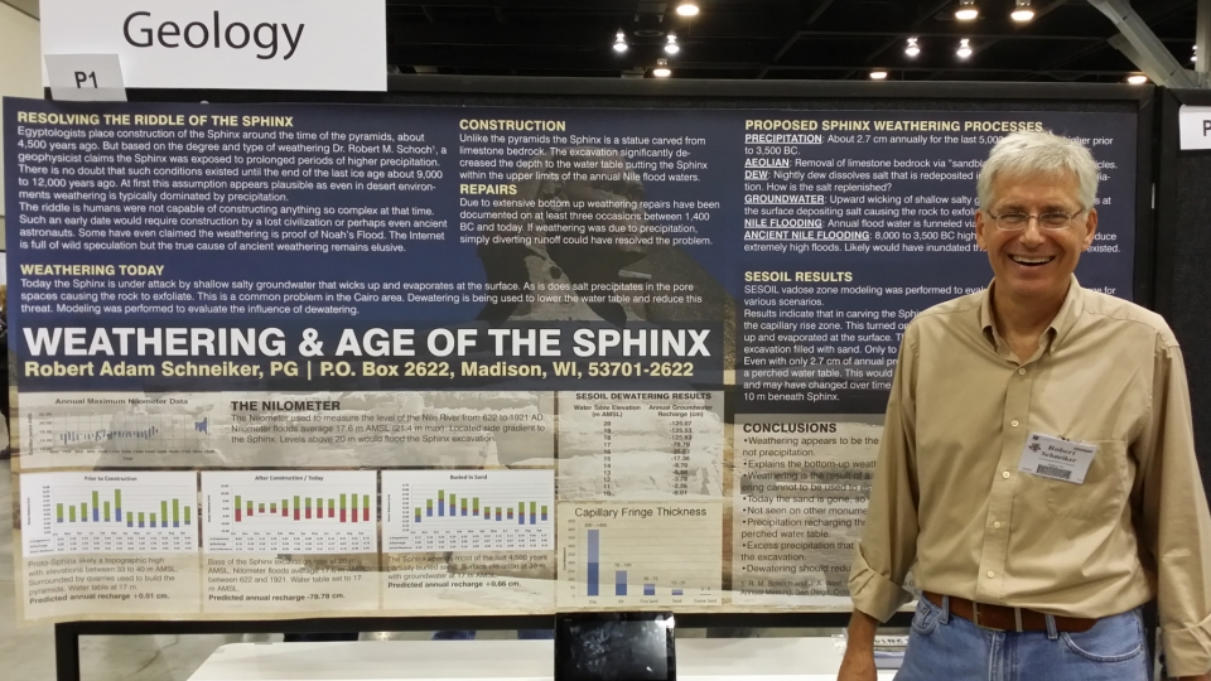
Mysteries of the
Great Sphinx


























